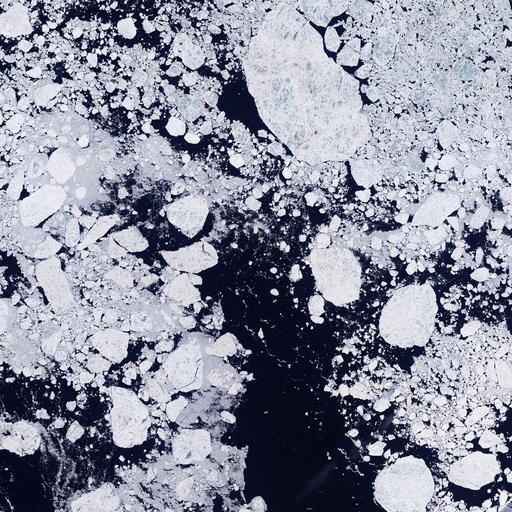MAKE A MEME
View Large Image

| View Original: | Detailed_View_of_Arctic_Sea_Ice,_Image_of_the_Day_DVIDS752837.jpg (3258x3258) | |||
| Download: | Original | Medium | Small | Thumb |
| Courtesy of: | commons.wikimedia.org | More Like This | ||
| Keywords: Detailed View of Arctic Sea Ice, Image of the Day DVIDS752837.jpg en For many years scientists have expected that climate change will be more rapid and dramatic at the poles than at lower latitudes an expectation that has been demonstrated both with climate models and recent observations of snow and ice surface temperatures vegetation and permafrost The major reason for thisof climate change is because snow and ice aren't just theresultof a cold climate they also help create it The path by which snow and ice influence the climate is obvious in this detailed photo-like image of Arctic sea ice captured on June 16 2001 by NASA's Landsat-7 satellite Sea ice is spread across the nearly black backdrop of the Arctic Ocean in a broken mosaic Large blocks of ice swirl against finely crushed ice that looks almost like foam The dark ocean surfaces absorb incoming sunlight while sea ice reflects it A cooling climate increases snow and ice which increases solar reflection leading to more cooling Warming climates cause snow and ice to melt which increases solar absorption leading to more warming Steady declines in Arctic sea ice over previous decades -- and especially rapid declines since around 2000 -- caused Seiji Kato an atmospheric scientist affiliated with NASA's Langley Research Center through Hampton University to wonder whether the recent losses were already dramatic enough to have changed the percent of incoming sunlight the Earth reflects back to space This planetary vital sign is known as Earth'sTo answer the question Kato and several teammates compared a suite of NASA and NOAA National Oceanic and Atmospheric Administration satellite observations of reflected sunlight clouds and sea ice and snow cover at polar latitudes from 2000-2004 What they found was a bit of a surprise while snow and ice in the Arctic declined the albedo didn't change To read more about the team's investigation read the Earth Observatory feature story earthobservatory nasa gov/Study/ArcticReflector/ Arctic Reflection Clouds Replace Snow and Ice as Solar Reflector NASA Identifier ge_07370 2011-07-08 Glenn Research Center https //www dvidshub net/image/752837 752837 2012-10-19 15 59 WASHINGTON DC US PD-USGov Langley Research Center Images from DoD uploaded by Fæ | ||||